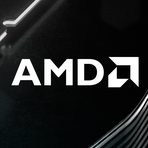The AI Infrastructure Revolution: Baseten and Cloudflare Lead the Charge
September 27, 2024, 5:05 am

Location: United States, California, San Francisco
Employees: 1001-5000
Founded date: 2009
Total raised: $4.63B
In the ever-evolving landscape of artificial intelligence, two companies are making waves: Baseten and Cloudflare. Both are pushing the boundaries of what’s possible in AI infrastructure. They are not just building tools; they are crafting the future of AI applications. Their recent announcements reveal a shift towards more flexible, scalable, and efficient AI solutions.
Baseten has launched its Hybrid Mode on Google Cloud Marketplace. This is a game-changer for enterprises looking to optimize their AI workloads. Imagine a bridge connecting two islands. One island is your existing infrastructure, and the other is Baseten’s powerful cloud. Hybrid Mode allows businesses to traverse this bridge seamlessly. It offers the flexibility to run sensitive workloads in a private cloud while leveraging Baseten’s high-performance infrastructure for less sensitive tasks.
This dual approach is like having the best of both worlds. Companies can maintain control over their data while also scaling their operations without breaking the bank. The flat rate of $25K per region for self-hosted workloads is a sweet deal. No hidden fees for GPU usage means companies can focus on growth, not costs.
Cloudflare, on the other hand, is enhancing its Workers AI platform. This serverless AI platform is designed to make building and scaling AI applications as easy as pie. With faster inference and support for larger models, Cloudflare is positioning itself as a leader in the AI space. It’s like upgrading from a bicycle to a sports car. The new capabilities allow developers to handle complex tasks with ease.
The key to Cloudflare’s success lies in its global network. With GPUs in over 180 cities, it minimizes latency. This is crucial as AI becomes a part of everyday life. Just as faster internet transformed smartphones, Cloudflare’s infrastructure is set to revolutionize AI interactions. The ability to run AI inference close to the user means quicker responses and a smoother experience.
Both companies are addressing a critical need in the market: the demand for efficient AI solutions. As AI workloads shift from training to inference, performance and regional availability become paramount. Baseten’s Hybrid Mode and Cloudflare’s enhanced Workers AI are responses to this demand. They are not just reacting; they are leading the charge.
The benefits of these innovations are clear. For Baseten, the focus is on flexibility and cost-effectiveness. For Cloudflare, it’s about speed and accessibility. Together, they are redefining what it means to build and deploy AI applications.
Consider the implications for businesses. With Baseten, companies can optimize their existing infrastructure. They can scale operations without the fear of skyrocketing costs. This is a lifeline for enterprises looking to leverage AI without overextending their budgets.
Cloudflare’s upgrades mean developers can create more powerful applications. The support for larger models like Llama 3.1 70B opens new doors. These models can handle more complex tasks, making AI applications more robust. The improved performance analytics and persistent logs provide developers with valuable insights. This data can be used to refine applications, enhancing user experiences.
In a world where data is king, privacy and compliance are non-negotiable. Baseten’s Hybrid Mode allows companies to keep sensitive workloads within their Google Cloud VPC. This ensures compliance while still benefiting from the scalability of Baseten’s infrastructure. It’s a delicate balance, but one that is essential in today’s data-driven landscape.
Cloudflare’s focus on reducing query latency is another significant advantage. With median query latency dropping to 31 milliseconds, applications can find relevant information quickly. This efficiency translates to cost savings. As AI applications become more affordable, adoption rates are likely to soar.
The collaboration between these two companies is a powerful force in the AI landscape. They are not just competitors; they are allies in the quest for better AI infrastructure. By leveraging each other’s strengths, they are creating a more robust ecosystem for developers and enterprises alike.
As we look to the future, the importance of scalable, flexible AI solutions cannot be overstated. Baseten and Cloudflare are at the forefront of this revolution. They are paving the way for a new era of AI applications.
In conclusion, the announcements from Baseten and Cloudflare signal a significant shift in the AI infrastructure landscape. Their innovations are not just about technology; they are about enabling businesses to thrive in a competitive environment. With flexible solutions and enhanced performance, the future of AI looks bright. The bridge between infrastructure and application is stronger than ever, and the journey has just begun.
Baseten has launched its Hybrid Mode on Google Cloud Marketplace. This is a game-changer for enterprises looking to optimize their AI workloads. Imagine a bridge connecting two islands. One island is your existing infrastructure, and the other is Baseten’s powerful cloud. Hybrid Mode allows businesses to traverse this bridge seamlessly. It offers the flexibility to run sensitive workloads in a private cloud while leveraging Baseten’s high-performance infrastructure for less sensitive tasks.
This dual approach is like having the best of both worlds. Companies can maintain control over their data while also scaling their operations without breaking the bank. The flat rate of $25K per region for self-hosted workloads is a sweet deal. No hidden fees for GPU usage means companies can focus on growth, not costs.
Cloudflare, on the other hand, is enhancing its Workers AI platform. This serverless AI platform is designed to make building and scaling AI applications as easy as pie. With faster inference and support for larger models, Cloudflare is positioning itself as a leader in the AI space. It’s like upgrading from a bicycle to a sports car. The new capabilities allow developers to handle complex tasks with ease.
The key to Cloudflare’s success lies in its global network. With GPUs in over 180 cities, it minimizes latency. This is crucial as AI becomes a part of everyday life. Just as faster internet transformed smartphones, Cloudflare’s infrastructure is set to revolutionize AI interactions. The ability to run AI inference close to the user means quicker responses and a smoother experience.
Both companies are addressing a critical need in the market: the demand for efficient AI solutions. As AI workloads shift from training to inference, performance and regional availability become paramount. Baseten’s Hybrid Mode and Cloudflare’s enhanced Workers AI are responses to this demand. They are not just reacting; they are leading the charge.
The benefits of these innovations are clear. For Baseten, the focus is on flexibility and cost-effectiveness. For Cloudflare, it’s about speed and accessibility. Together, they are redefining what it means to build and deploy AI applications.
Consider the implications for businesses. With Baseten, companies can optimize their existing infrastructure. They can scale operations without the fear of skyrocketing costs. This is a lifeline for enterprises looking to leverage AI without overextending their budgets.
Cloudflare’s upgrades mean developers can create more powerful applications. The support for larger models like Llama 3.1 70B opens new doors. These models can handle more complex tasks, making AI applications more robust. The improved performance analytics and persistent logs provide developers with valuable insights. This data can be used to refine applications, enhancing user experiences.
In a world where data is king, privacy and compliance are non-negotiable. Baseten’s Hybrid Mode allows companies to keep sensitive workloads within their Google Cloud VPC. This ensures compliance while still benefiting from the scalability of Baseten’s infrastructure. It’s a delicate balance, but one that is essential in today’s data-driven landscape.
Cloudflare’s focus on reducing query latency is another significant advantage. With median query latency dropping to 31 milliseconds, applications can find relevant information quickly. This efficiency translates to cost savings. As AI applications become more affordable, adoption rates are likely to soar.
The collaboration between these two companies is a powerful force in the AI landscape. They are not just competitors; they are allies in the quest for better AI infrastructure. By leveraging each other’s strengths, they are creating a more robust ecosystem for developers and enterprises alike.
As we look to the future, the importance of scalable, flexible AI solutions cannot be overstated. Baseten and Cloudflare are at the forefront of this revolution. They are paving the way for a new era of AI applications.
In conclusion, the announcements from Baseten and Cloudflare signal a significant shift in the AI infrastructure landscape. Their innovations are not just about technology; they are about enabling businesses to thrive in a competitive environment. With flexible solutions and enhanced performance, the future of AI looks bright. The bridge between infrastructure and application is stronger than ever, and the journey has just begun.
